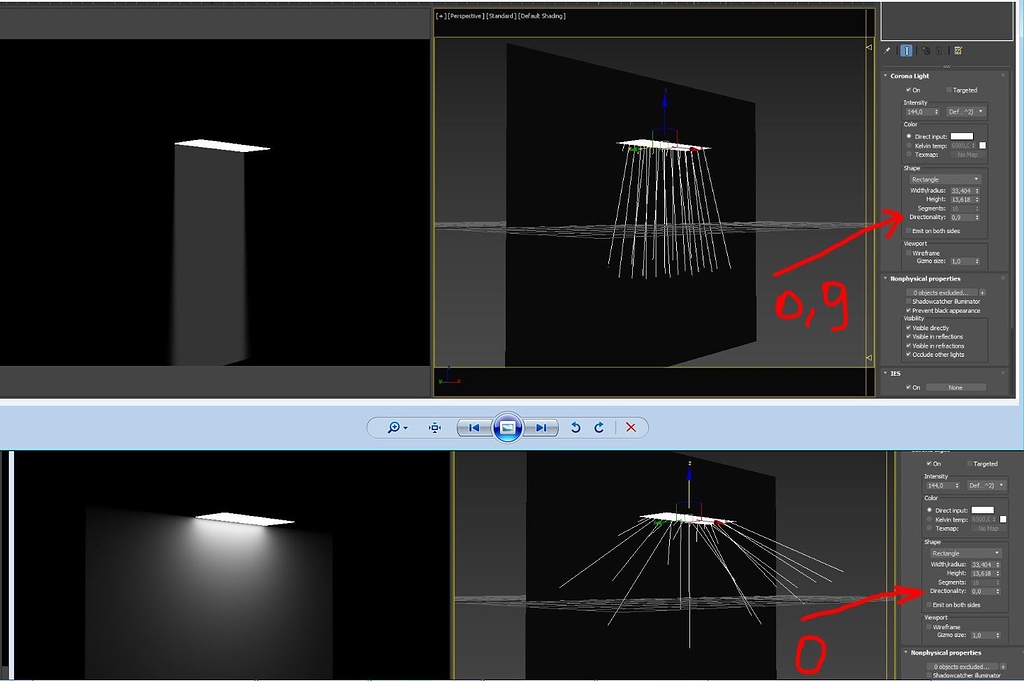

It's a very specific curve that our eyes are used to seeing. Light follows the inverse square law when it’s being emitted in all directions, which states that the amount of light hitting a surface decreases in proportion with the square of its distance from the source. Why does this matter? Because the apparent scale of your scene and the strength of your lights are interconnected. The default cube is a whopping 6.5 feet tall (2 m), the camera is flying 16 feet (5 m) off the ground, and the default lamp is about 20 feet (5.8 m) from the nearest point on the cube. 🤓 Blender's defaults are made to be mathematically convenient, not artistically intuitive.

We often trust our gut when lighting virtual scenes in Blender, which can lead us to results that don't make any sense. One side affect of this amazing adaptability is that our intuitions about the strength and colors of light can be terribly off.

It's incredibly hard for us to judge the qualities of a light if we don't have anything to compare it with. What we experience is entirely dependent on context. Our eyes are amazingly adaptive - we can see a broad range of amounts of light as "bright" and even a broad range of colors as "white". 💡 So, what's the deal with photometrics? Because Eevee can't use nodes yet, the lumens, color temperature, & spot angle values can only be adjusted upon creation and IES textures will not be applied.
All lights can be used in Eevee but are more convenient to use in Cycles. Area lights have a Spread Angle property to control how much light is directed forwards. They're also automatically placed above the height of the camera for convenience. Sun presets can be created with a corresponding sky that's automatically linked to the sun's rotation. Spot lights produce the same amount of light regardless of their spot angle, so tightening the beam will actually focus the light, unlike Blender's default. You can set the scene's exposure to match the newly added preset with one click. A lumens conversion node group is appended if Use Nodes is enabled, which can be used for any type of light in Cycles including mesh lights. The number of lumens will be the same regardless of the color selected, so a blue light and a red light will appear equally bright.Īdjusting a normal Blender light with constant watts makes some colors appear darker than others:Īdjusting a photometric light with constant lumens keeps the perceptual brightness about the same (explanation below): You can set an RGB color instead of a Kelvin value if desired. Each light has a preset Kelvin color temperature based on its real world source, which can be easily adjusted. Each light's strength can be adjusted in lumens instead of watts (explanation below. There are also over 30 IES presets that cast believable patterns according to how each bulb is actually used, for a total of over 60 presets. There are over 30 plain point, spot, area, and sun presets in total. All lights are based on real world light fixtures and are organized by type and strength. This plugin for Blender adds over 60 photometric light presets to your Add menu. Introducing physically based, photometric lighting for Cycles and Eevee







 0 kommentar(er)
0 kommentar(er)
